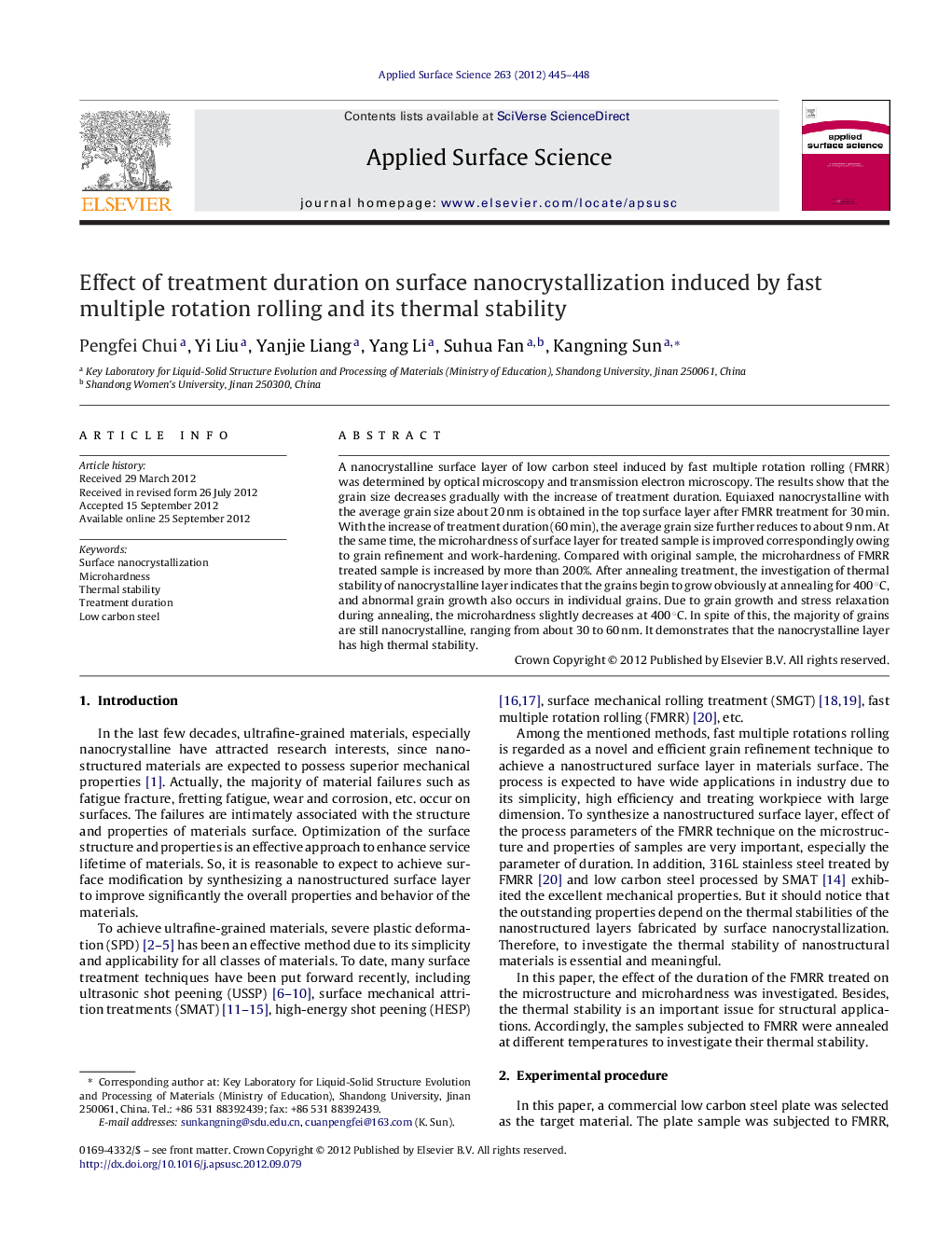| Article ID | Journal | Published Year | Pages | File Type |
|---|---|---|---|---|
| 5364198 | Applied Surface Science | 2012 | 4 Pages |
A nanocrystalline surface layer of low carbon steel induced by fast multiple rotation rolling (FMRR) was determined by optical microscopy and transmission electron microscopy. The results show that the grain size decreases gradually with the increase of treatment duration. Equiaxed nanocrystalline with the average grain size about 20 nm is obtained in the top surface layer after FMRR treatment for 30 min. With the increase of treatment duration (60 min), the average grain size further reduces to about 9 nm. At the same time, the microhardness of surface layer for treated sample is improved correspondingly owing to grain refinement and work-hardening. Compared with original sample, the microhardness of FMRR treated sample is increased by more than 200%. After annealing treatment, the investigation of thermal stability of nanocrystalline layer indicates that the grains begin to grow obviously at annealing for 400 °C, and abnormal grain growth also occurs in individual grains. Due to grain growth and stress relaxation during annealing, the microhardness slightly decreases at 400 °C. In spite of this, the majority of grains are still nanocrystalline, ranging from about 30 to 60 nm. It demonstrates that the nanocrystalline layer has high thermal stability.
⺠Effect of treatment time on surface nanocrystallization of a low carbon steel. ⺠The grain size decreases gradually with the increase of treatment duration. ⺠The microhardness of FMRR treated sample reaches 284 HV. ⺠The nanocrystalline layer is stable during annealing treatment up to 400 °C.
